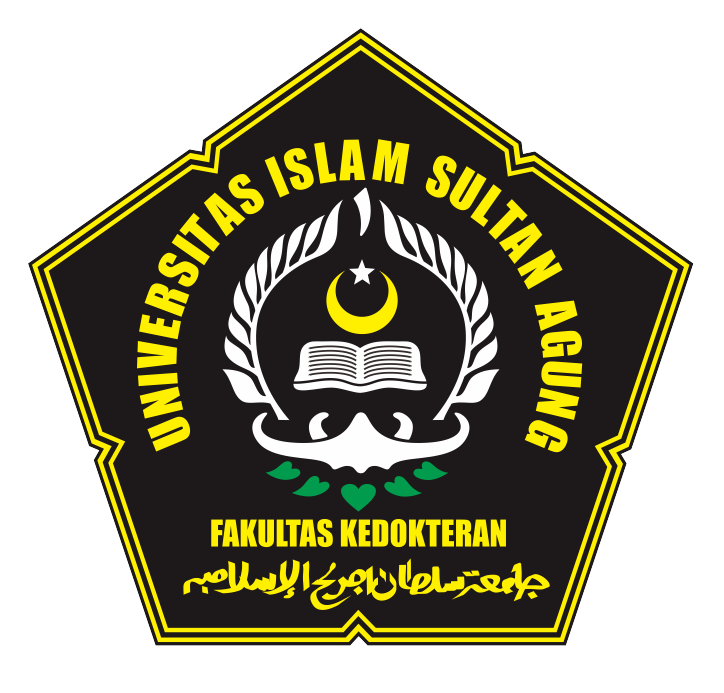Medical Faculty of Islamic Sultan Agung University - Indonesia
The Administration of Orange Sweet Potato (Ipomoea Batatas L.) Extract Increases Sperm Consentration, Mortility and Viability in Male Mice Exposed to Cigarette Smoke
Introduction: Ipomoea batatas L (LIP) contains antioxidants beta-carotene, vitamin C and vitamin E. Cigarette smoke containing ROS has been proven to decrease sperm quality.
Objective: this study aimed to confirm that orange sweet potato extract increases sperm consentration, motility, and viability in mice exposed to cigarette smoke.
Methods: In this experimental study with post test only control group design, 30 male mice were divided into 6 groups. Normal group (Nor-G), no intervention, served as the normal control group. Negative control group (Neg-G) was only exposed to cigarette smoke. Positive control group was only treated with IPL 16mg/ml. IPL-15, IPL-16, and IPL-17 group were treated with IPL 15, 16, and 17mg/ml and exposed to cigarette smoke, respectively.
Results: Post Hoc LSD analysis showed that means of sperm concentration and viability in IPL-15, IPL-16, and IPL-17 group were significantly higher compared to that of Neg-G (p < 0.05) and were lower compared to that of Nor-G and Pos-G (p < 0.05). Mann Whitney analysis indicated that the persentage of sperm motility in IPL-15, IPL-16, and IPL-17, were significant higher compared to that of Neg-G, p < 0.05. Whilst compared to that of Nor-G and Pos-G the persentage of sperm motility in IPL-15, IPL-16, and IPL-17, there was no significant differences, p > 0.05.
Conclusion: treatment of IPL capable of increasing sperm concentration, motility, and viability in male mice were exposed to cigarrette smoke.
Keywords: cigarette smoke;sperm motility;that extract of orange sweet potato;beta-carotene;Vitamin C;Vitamin E
- Food and Drug Administration (FDA), 2001, Guidance for Industry Bioanalytical Method Validation, Center for Drug Evaluation and Research, Rockville, MD, USA. Pp 16.
- Hasim, A., Yusuf, 2008, Ubi Jalar Kaya Antosianin Pilihan Pangan Sehat, Badan Litbang Pertanian, Malang.
- Hidajat, Boerhat, 2005, Penggunaan Antioksidan Pada Anak (the use of antioxidant in children). Dalam: Naskah Lengkap Continuing Education Ilmu Kesehatan anak XXXV Kapita Selekta Ilmu Kesehatan anak IV “Hot Topics in Pediatricsâ€. Surabaya: FK UNAIR RSU Dr. Soetomo.
- Kartasapoetra, A, G., 1989, Hubungan Tanah, Air dan Tanaman, IKIP Semarang Press, Semarang.
- Lampe, J.W., 1999, Health Effect of Vegetables and Fruit : Assessing Mechanisms of Action in Human Experimental Studies. Am J Clin Nutr, 70 (1999), pp. 475S-490S.
- Menteri Kesehatan Republik Indonesia, 1992, Peraturan Menteri Kesehatan Republik Indonesia Nomor 761 Tahun 1992 tentang Fitofarmaka.
- Muhilal, 2004, Angka Kecukupan Gizi yang Dianjurkan. Widya Karya Pangan & Gizi VIII. Jakarta: LIP.
- Myers, G.E dan Myers, M.T, 2002, The Dynamics of Human Communication: A Laboratory Approach, Sixth Edition, Mc Graw Hill, Inc: New York.
- Nasihun T. R., 2010, Anti-Oksidan Bagi Pasangan yang Menginginkan Anak, Dalam: Rubrik kesehatan Koran suara merdeka, Dikutip 5 Maret 2015.
- Nathania Niwedya Kemal, A. Karim, Asmawati, Seniwati, 2013, Analisis Kandungan β-karoten dan Vitamin C dari berbagai Varietas Ubi Jalar (Ipomoea batatas L.). Jurnal Indonesia Chimia Acta. 1-5.
- RISKESDAS, 2013, Badan Penelitian dan Pengembangan Kesehatan Kementrian Kesehatan RI.
- Ross C, Morriss A, Khairy M, Khalaf Y, Braude P, Coomarasamy A, El-Toukhy T, 2010. A systematic review of the effect of oral antioxidants on male infertility. Reproductive BioMedicine Online ; 20, 711– 723
- Sharma, Sl, 2007, Effect of Collagen Biosynthesis, India: Birla Institute of Technology, 2049-2054.
- Suryohudoyo, P., 2000, Oksidan, antioksidan dan radikal bebas. Kapita Selekta Ilmu Kedokteran Molekular, Jakarta: Info Medika.
- Wijaya, A., 1996, Radikal Bebas dan Parameter Status Antioksidan. Forum Diagnostium 1, Lab Klinik Prodia, pp. 1-12.
- World Health Organisation (WHO), 2010, WHO Laboratory Manual for the Examination and Processing of Human Semen. 5th ed. Geneva: World Health Organization.
 Copyright (c) 2017 Sains Medika: Jurnal Kedokteran dan Kesehatan
Copyright (c) 2017 Sains Medika: Jurnal Kedokteran dan Kesehatan

This work is licensed under a Creative Commons Attribution 4.0 International License.
